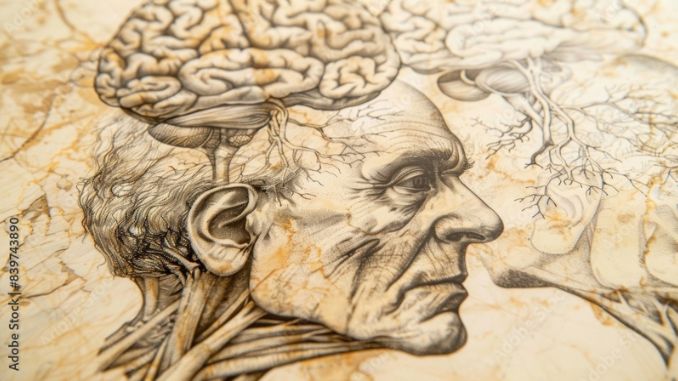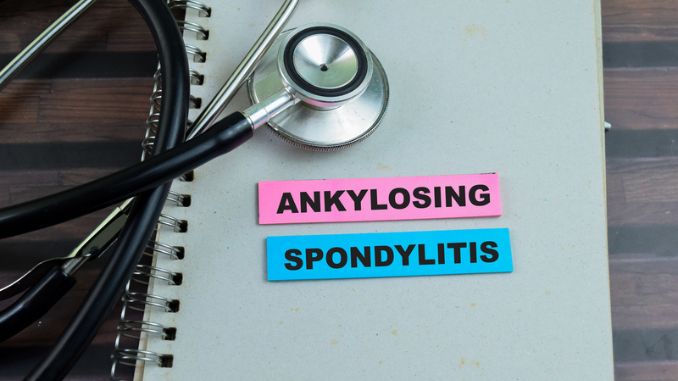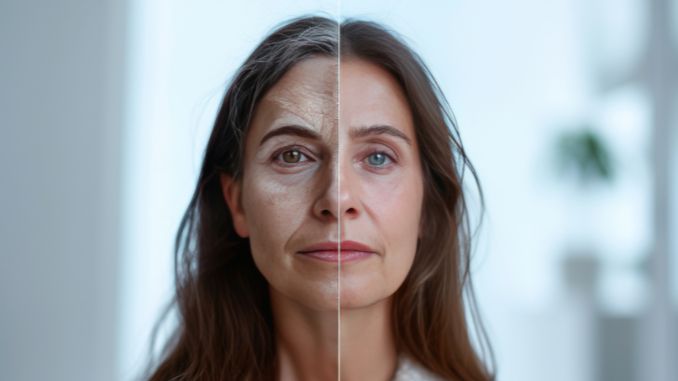Disclaimer: Please note that this content is provided for informational purposes only and is not intended to be a substitute for Medical guidance. Before initiating anything, it is recommended to seek advice from a healthcare professional.
While the human body is a marvel of complexity, it is not immune to common genetic disorders. These conditions, caused by changes in our DNA, can affect anyone, regardless of age or gender.
Understanding genetic disorders [¹] and finding answers is crucial for individuals and families facing these challenges.
In this article, we will delve into the world of common genetic disorders, exploring the various types, causes, and symptoms. We will discuss how medical research and technological advances have paved the way for diagnostics and treatments.
Keep reading as we discuss the emotional and psychological impact of living with this type of problem and how to provide invaluable assistance.
Common Types Of Genetic Disorders
1. Down Syndrome

Down syndrome [²] is caused by an extra copy of chromosome 21, a condition known as trisomy 21. Out of all the cases of Down syndrome, only 1% of them have the component to be passed down from parent to child.
Furthermore, in about one-third of cases, one parent is a carrier of a translocated chromosome.
- Symptoms And Signs
Down syndrome is characterized by intellectual disabilities, distinct facial features, and an increased risk of certain health conditions, such as heart defects and leukemia.
To know if a child has Down syndrome, there are three ways of detecting it. Prenatally, it can be detected via ultrasound, blood tests, and DNA screening. For postnatal tests, you can opt for either a physical examination or karyotyping
Physical examinations include checking for physical features such as a flat facial profile, upward-slanting eyes, a single deep crease across the palm, and poor muscle tone.
For a more accurate test, karyotyping is checking the chromosomes and identifying whether the subject has an extra chromosome 21 or not.
- Causes And Risk
The risk of having a baby with Down syndrome increases with the mother’s age. Women aged 35 and older have a higher likelihood of nondisjunction occurring during egg formation.
For instance, a 35-year-old woman has about a 1 in 350 chance of having a baby with Down syndrome, while a 40-year-old woman’s risk increases to about 1 in 100.
While maternal age is a significant factor, some studies suggest that the father’s age, especially over 40, might slightly increase the risk.
Lastly, there is an increased risk if one of the parents is a carrier of a genetic translocation involving chromosome 21.
2. Cystic Fibrosis

Cystic fibrosis is a lifelong genetic condition, a certain common genetic disorder that affects the lungs, digestive system, and other organs.
It is caused by mutations of multiple genes in the CFTR gene and produces thick and sticky mucus, resulting in recurrent lung infections and digestive problems. Environmental exposure and red blood cells may also cause the symptoms to appear.
- Symptoms And Signs
Persistent coughing is the most common symptom of cystic fibrosis.
Recurrent infections such as bronchitis and pneumonia are common due to the buildup of mucus in the airways, which creates a breeding ground for bacteria.If the person does not yet display coughing, then they might have difficulty breathing and wheezing due to narrowed airways and mucus obstruction.
Sinusitis, which is the chronic inflammation and infection of the sinuses can also be a Digestive Symptom.
If none of these symptoms show, you can check the person’s appetite and overall weight.
- Causes And Risk
CF is commonly caused by mutations in the CFTR (cystic fibrosis transmembrane conductance regulator) gene. This gene is responsible for producing the CFTR protein, which regulates the movement of salt and water in and out of cells.
Mutations in the CFTR gene produce a faulty CFTR protein, which results in thick, sticky mucus in various organs
Other causes are having a family history of CF, ethnicity, geographic locations. Having a family history of CF increases the risk and doubles for people of Northern European descent.
Around 1 in 2,500 to 3,500 newborns are affected in Northern Europe. Furthermore, if parents or siblings have CF, there is a higher likelihood of carrying the CFTR mutation.
3. Huntington’s Disease

Huntington’s disease is an inherited disorder. It causes the breakdown of nerve cells in the brain, affecting the body’s central nervous system.
It leads to the deterioration of physical and mental abilities, with symptoms including involuntary movements and cognitive decline.
- Symptoms And Signs
There are plenty of symptoms regarding Huntington’s disease, one of them is motor skills. People with Huntington’s Disease often have these uncontrolled, jerky movements of the limbs, and face.
People with Huntington’s Disease often have these uncontrolled, jerky movements of the limbs, and face. These movements can vary in severity and may interfere with daily activities.
Furthermore, these can cause problems in coordination and balance, increasing the risk of falls and injuries. If that isn’t the worst, Huntington’s Disease may also have cognitive symptoms. These include; memory loss, impaired judgment, difficulty in focusing, and poor organizational skills.
Patients may have difficulty recalling recent events or learning new information. They may also have trouble making decisions, solving problems, and planning.
Lastly, a shortened attention span, and difficulty organizing thoughts and tasks are signs of Huntington’s Disease. All of these can affect daily activities and overall quality of life for the patient and should not be taken lightly.
- Causes And Risk Factors
Huntington’s disease is primarily caused by a genetic mutation in the HTT gene, which follows an autosomal dominant inheritance pattern. The main risk factor is having a parent with the disease, leading to a 50% chance of inheritance.
Genetic anticipation can result in earlier onset and more severe symptoms in subsequent generations. While genetic testing can identify carriers of the mutation, the decision to undergo testing involves careful consideration and counseling.
4. Ankylosing Spondylitis

Ankylosing spondylitis (AS) is a chronic inflammatory disease primarily affecting the spine and the sacroiliac joints (located at the base of the spine where it connects with the pelvis).
This also causes inflammation of the spinal joints (vertebrae), leading to severe, chronic pain and discomfort. Over time, this inflammation can cause the vertebrae to fuse, resulting in reduced flexibility and a hunched-forward posture.
In some cases, the disease can also affect other joints and organs, such as the eyes, heart, and lungs.
- Symptoms And Signs
Early diagnosis and treatment of ankylosing spondylitis are crucial to manage symptoms, maintain mobility, and prevent severe complications.
Common symptoms of ankylosing spondylitis are persistent lower back pain, stiffness in the neck, and buttocks.Inflammation and pain in other joints, such as the hips, shoulders, knees, and ankles are also signs of ankylosing spondylitis.
Lastly, if none of these symptoms show, check to see if the patient has gastrointestinal issues or unintended weight loss. If there are no other types of illness that can cause those, then these are also symptoms of ankylosing spondylitis.
- Causes And Risk Factors
Ankylosing spondylitis (AS) is a chronic inflammatory disease primarily affecting the spine and sacroiliac joints, caused by a combination of genetic, environmental, and immunological factors.
The strongest genetic risk factor is the HLA-B27 gene, though not everyone with this gene will develop AS. Similar to cystic fibrosis, the disease typically begins in late adolescence or early adulthood, with a higher prevalence in men and in populations of Northern European descent.
Environmental factors, such as infections and smoking, may influence the disease’s onset and progression.
AS involves an abnormal immune response leading to chronic inflammation, pain, stiffness, and potentially the fusion of vertebrae, which reduces spinal flexibility.
5. Hemophilia

Hemophilia is a common genetic disorder that impairs the blood’s ability to clot properly, leading to excessive bleeding even from minor injuries.
There are two main types of hemophilia: Hemophilia A, caused by a deficiency in clotting factor VIII, and Hemophilia B, caused by a deficiency in clotting factor IX.
Both types result in the inability to form stable blood clots, leading to prolonged or spontaneous bleeding episodes.
- Symptoms And Signs
Hemophilia has symptoms that can be mistaken for other illnesses so it is best to watch out for that.
The most common symptoms of hemophilia are either excessive bleeding from minor cuts or bleeding without any cuts, specifically within the joints or muscles.
This bleeding from the joints and muscles often causes Pain, swelling, and stiffness, especially if it is recurring. Large bruises may also form due to minor bumps.
Although they may be uncommon, they are also signs of hemophilia. Lastly, another sign is blood in the urine, which suggests internal bleeding in either the urinary or digestive systems.
- Causes And Risk Factors
There are two main types of hemophilia, while Hemophilia B is caused by a deficiency in clotting factor IX. Both types result in the inability to form stable blood clots, leading to prolonged or spontaneous bleeding episodes.
This condition is usually inherited and primarily affects males, as the faulty gene is located on the X chromosome.
Females (who have two X chromosomes) are usually only carriers and rarely exhibit symptoms because they have a second, normal X chromosome to compensate.
6. Ehlers-Danlos Syndrome

Ehlers-Danlos Syndrome (EDS) is a group of inherited disorders that affect the connective tissues, which provide strength and elasticity to the skin, joints, and blood vessel walls.
Defects in the structure, production, or processing of collagen, a critical protein that helps to form the body’s connective tissues, characterize the syndrome.
Furthermore, people typically inherit the syndrome in either an autosomal dominant or autosomal recessive manner, meaning parents can pass it down to their children.
- Symptoms And Signs
Symptoms and signs of Ehlers-Danlos Syndrome can vary greatly depending on the specific subtype. Common features include hypermobile joints that easily dislocate, making them prone to frequent injuries and pain.
Other symptoms may include chronic pain, muscle fatigue, and a tendency to develop early-onset osteoarthritis. In some subtypes, fragile blood vessels and organs that can rupture affect the vascular system, leading to life-threatening conditions.
- Causes And Risk Factors
The primary causes of Ehlers-Danlos Syndrome are genetic mutations that disrupt the normal production of collagen. These mutations can occur in various genes, such as COL5A1, COL5A2, and others, depending on the specific subtype of EDS.
A parent typically passes on the defective gene causing EDS due to its genetic nature. A family history of the syndrome increases the risk for EDS, as parents can inherit it in an autosomal dominant or recessive pattern.
Early diagnosis through genetic testing and clinical evaluation can help manage symptoms and prevent complications
Diagnosing Common Genetic Disorders
- Chromosomal Analysis: This test involves examining a person’s chromosomes for abnormalities or changes in structure or number. It can help diagnose conditions such as Turner, Klinefelter, and Down syndrome.
- DNA Sequencing: Scientists use DNA sequencing to identify specific genetic mutations or variations. It involves analyzing the order of nucleotides in a person’s DNA. This test is commonly used to diagnose or identify conditions such as Cystic fibrosis gene, Huntington’s disease, Sickle Cell disease, or other disorders that may have certain types of cancer.
- Biochemical Testing: Biochemical testing measures the levels of certain substances in the body, such as enzymes or hormones. For example, newborn screening tests can detect metabolic disorders such as phenylketonuria (PKU) or maple syrup urine disease. Genetic Testing can provide valuable information about an individual’s diagnosis, prognosis, and treatment options. It can also help determine the likelihood of passing on a common genetic disorder to future generations. However, it is important to your holistic approach or for genetic testing with caution. Get a medical opinion from healthcare professionals first in order to fully understand the implications of the testing.
Treatment Options For Common Genetic Disorders
The treatment options for genetic disorders vary depending on the specific condition and its symptoms. While some common genetic disorders have no cure, treatment focuses on managing symptoms, preventing complications, and improving quality of life.
Some common treatment approaches include:
- Medications: Medications may be prescribed to manage symptoms or slow the progression of how these genetic disorders occur.
- Surgical interventions: In some cases, surgical interventions may be necessary to correct physical abnormalities or improve organ function.
- Therapies and Interventions: Specialized care for various therapies and interventions can help individuals with genetic disorders manage their symptoms and develop essential skills.
Genetic Counseling And Support Services
Genetic counseling [³] is a specialized service that helps individuals and families understand the genetic basis of a condition, assess the risk of developing or passing on a genetic disorder, and make informed decisions regarding family planning and healthcare.
Counselors are healthcare professionals trained in genetics and counseling techniques. In addition to genetic counseling, various support services are available to assist individuals and families affected by certain common genetic disorders.
These services can provide emotional support, connect individuals with resources and support groups, and offer practical assistance. Some organizations also focus on advocacy and raising awareness about specific gene mutations in people.
Conclusion
Understanding genetic diseases and seeking answers is crucial for individuals and families facing the challenges posed by these conditions. By delving into the world of genetic disorders, and exploring their various types, causes, and symptoms, individuals can gain a comprehensive understanding of their specific condition.
Advances in medical research and technology help pave the way for better diagnostics, treatments, and support services.
Navigating the challenges of living with a genetic disorder can be daunting, but by seeking knowledge and support, individuals and families can empower themselves to lead fulfilling lives.
Genetic counseling, support networks, and access to the latest research advancements can provide invaluable assistance and guidance on the journey toward understanding and managing to get better. Whether you are someone living with a genetic disease, a caregiver, or simply curious about this complex topic.
This article aims to provide a comprehensive understanding of genetic disorders and offer guidance on finding answers. By raising awareness and promoting understanding, there is hope for individuals affected by common genetic disorders to receive the necessary support they need to thrive.
Are you tired of dealing with chronic pain, fatigue, and other symptoms of inflammation? It’s time to take control of your health and well-being. Our comprehensive Master Guide to Inflammation is here to help you understand and combat inflammation naturally and effectively.


Rick Kaselj MS, is a leading kinesiologist and injury specialist as well as co-creator of the best-selling Unlock Your Hip Flexors program. Rick creates exercise programs that help people heal injuries and eliminate pain, so they can go back to living a full, active, healthy life.



